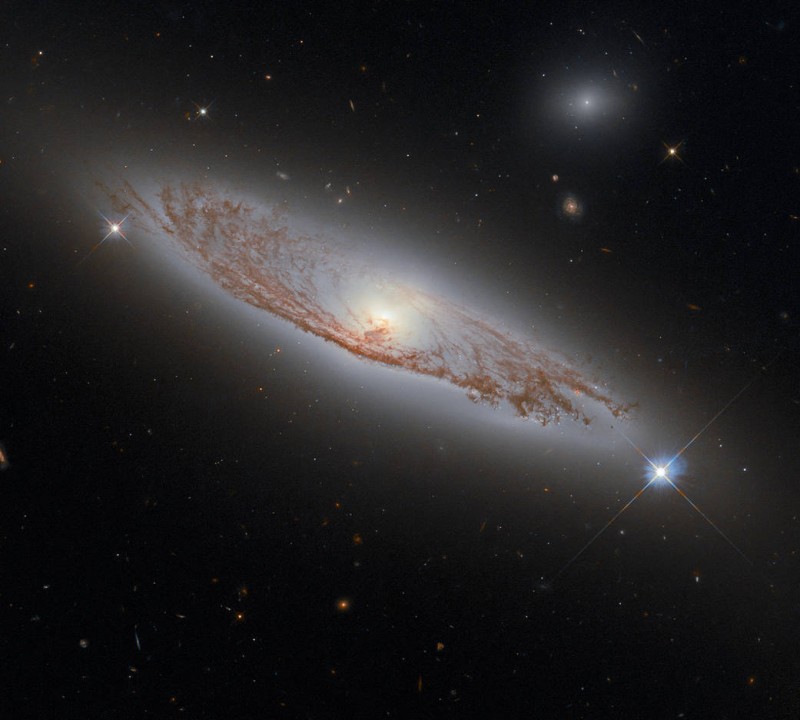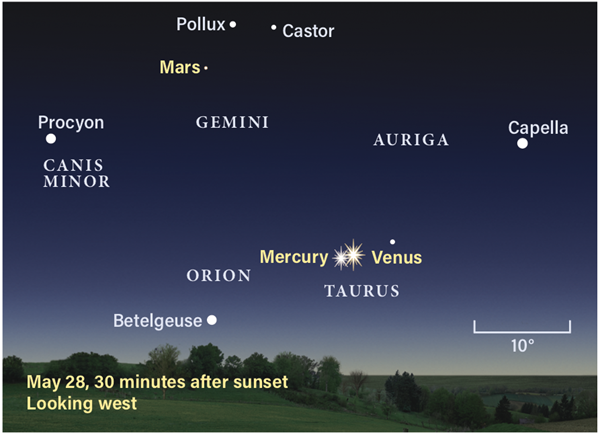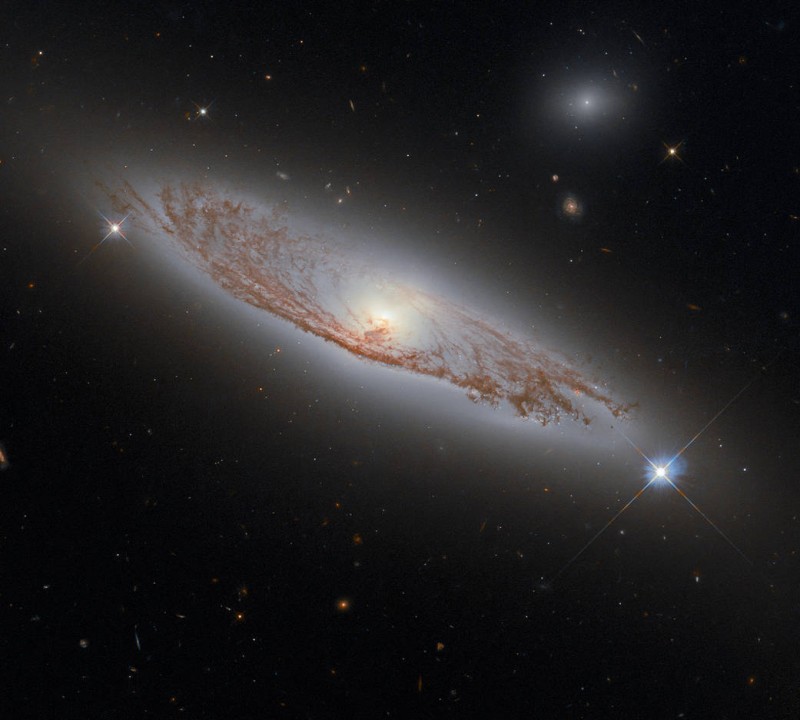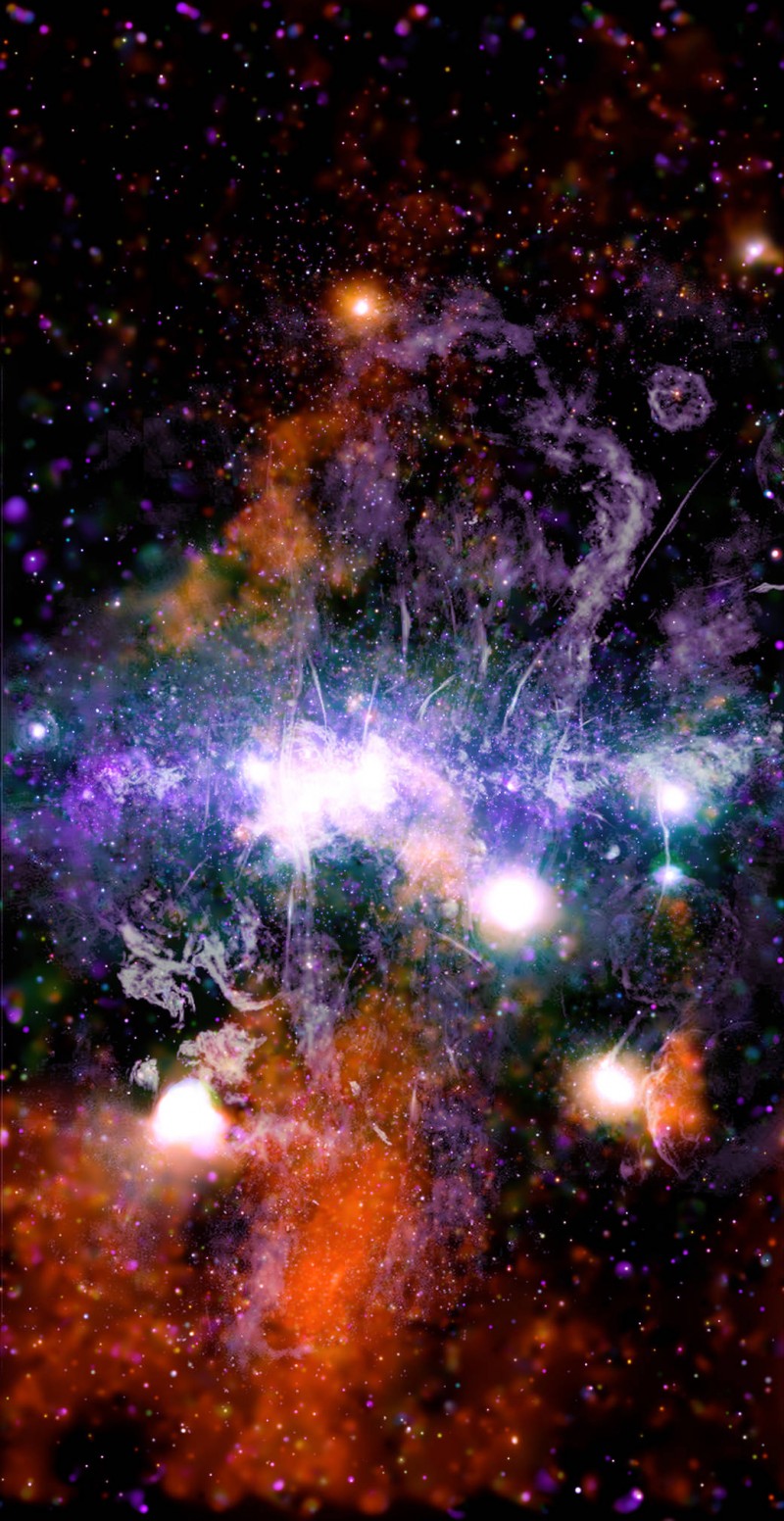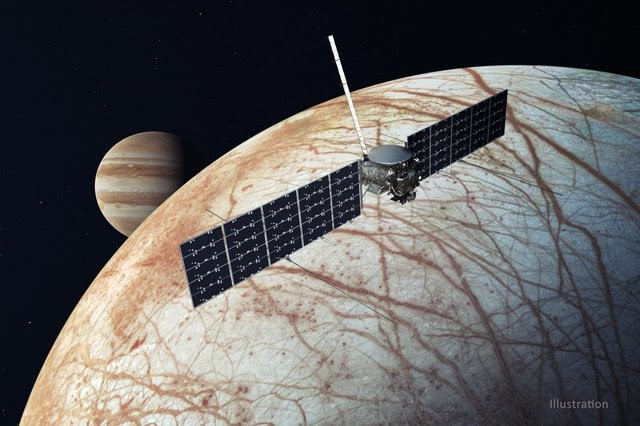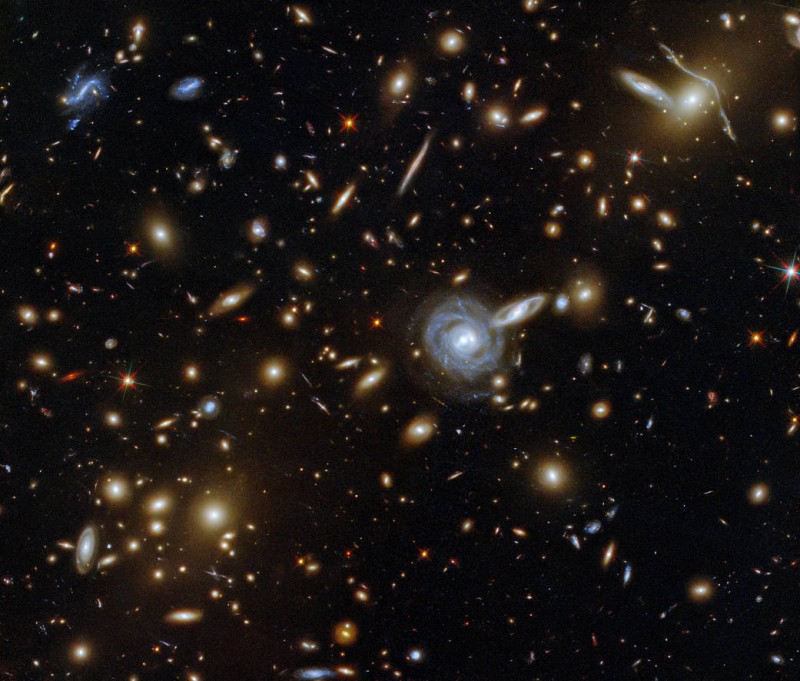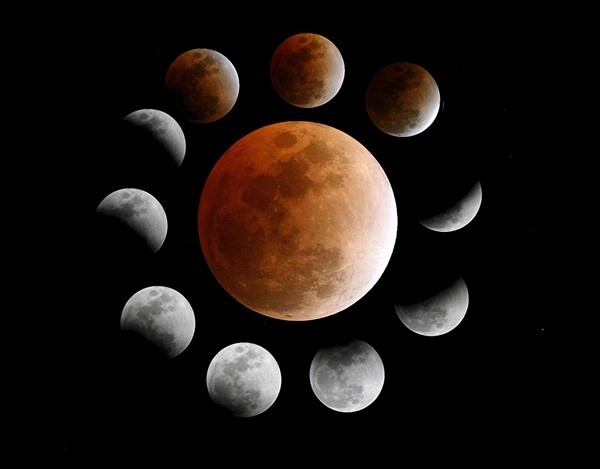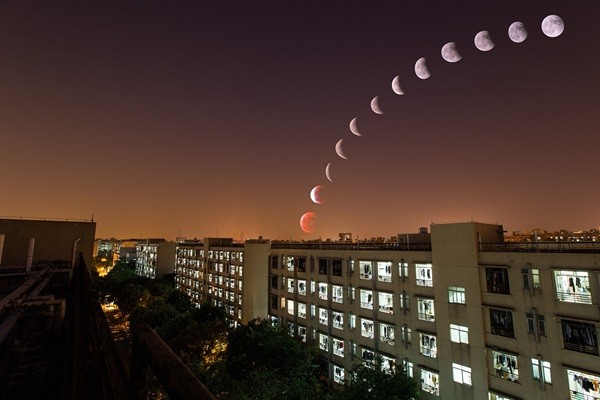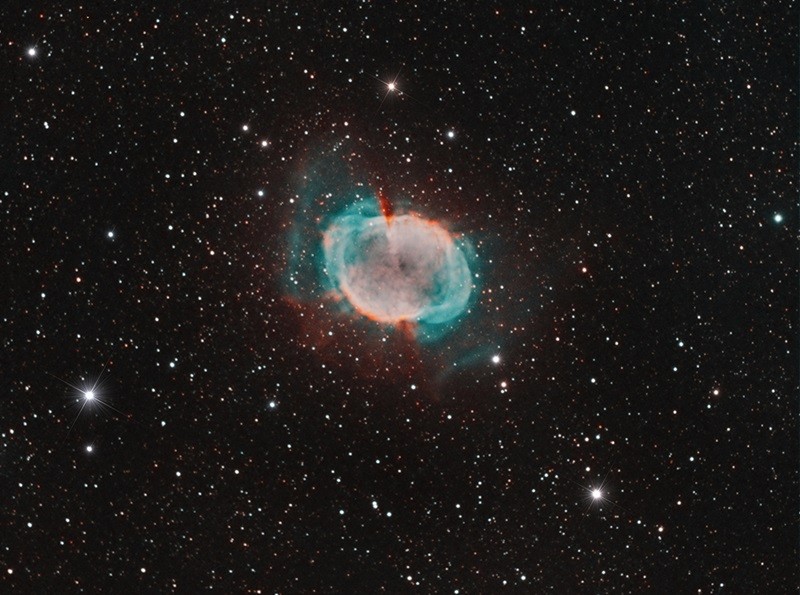Blog
What's Up - June 2021
Tuesday, June 8th 2021 04:35 PM
What's Up - June 2021
What's Up for June? A partial solar eclipse, the scorpion's sting, and June is for Juno!
Following last month's total lunar eclipse, June brings us a solar eclipse. On June 10th, the Moon will slip briefly between Earth and the Sun, partially obscuring our local star from view.
Whereas May's lunar eclipse was best viewed around the Pacific, this month's solar eclipse will be a treat for those in the northeast U.S., eastern Canada, and Northern Europe. For U.S. viewers, this is a sunrise event, with the Moon already appearing to have taken a bite out of the Sun as it's rising. So you'll want to find a clear view toward the eastern horizon to observe it. Those farther to the north and east will see more of the Sun obscured by the Moon. For those in northern Europe, it's more of a lunchtime eclipse.
(Wherever you are, please review eclipse safety practices, and never look at the Sun without proper protection for your eyes.)
On summer evenings, you may notice a c...
Read More
Read More
Hubble Captures a Captivating Spiral
Thursday, June 3rd 2021 04:14 PM
Hubble Captures a Captivating Spiral
This image shows the spiral galaxy NGC 5037, in the constellation of Virgo. First documented by William Herschel in 1785, the galaxy lies about 150 million light-years away from Earth. Despite this distance, we can see the delicate structures of gas and dust within the galaxy in extraordinary detail. This detail is possible using Hubble’s Wide Field Camera 3 (WFC3), whose combined exposures created this image.
WFC3 is a very versatile camera, as it can collect ultraviolet, visible, and infrared light, thereby providing a wealth of information about the objects it observes. WFC3 was installed on Hubble by astronauts in 2009, during Servicing Mission 4 (SM4). SM4 was Hubble’s final Space Shuttle servicing mission, expected to prolong Hubble’s life for at least another five years. Twelve years later, both Hubble and WFC3 remain very active and scientifically productive.
Read More
Read More
The Sky This Week: A conjunction of Venus and Mercury
Wednesday, June 2nd 2021 04:31 PM
The Sky This Week: A conjunction of Venus and Mercury
The Moon also mingles with the planets from May 28 to June 4.
Twilight trio: Mercury and Venus sit close together in Taurus the Bull May 28th, while Mars stands above them in Gemini.
Friday, May 28
Mercury and Venus experience a close conjunction tonight when they come within 24' of each other amid the setting stars of Taurus the Bull. The pair is visible for about an hour after sunset; look west using any telescope or binoculars with a field of view that can fit the entire Full Moon to see both planets at once.
Mercury, a faint magnitude 1.9, spans about 11" across and is a mere crescent just 12 percent lit. By contrast, brilliant magnitude –3.9 Venus is nearly full in phase and spans 10". Although Venus is physically much larger than Mercury, it appears smaller because it is farther away.
One constellation away in Gemini the Twins, you’ll find magnitude 1.7 Mars. Because it’s located higher in the s...
Read More
Read More
Hubble Captures a Captivating Spiral
Friday, May 28th 2021 04:40 PM
Hubble Captures a Captivating Spiral
This image shows the spiral galaxy NGC 5037, in the constellation of Virgo. First documented by William Herschel in 1785, the galaxy lies about 150 million light-years away from Earth. Despite this distance, we can see the delicate structures of gas and dust within the galaxy in extraordinary detail. This detail is possible using Hubble’s Wide Field Camera 3 (WFC3), whose combined exposures created this image.
WFC3 is a very versatile camera, as it can collect ultraviolet, visible, and infrared light, thereby providing a wealth of information about the objects it observes. WFC3 was installed on Hubble by astronauts in 2009, during Servicing Mission 4 (SM4). SM4 was Hubble’s final Space Shuttle servicing mission, expected to prolong Hubble’s life for at least another five years. Twelve years later, both Hubble and WFC3 remain very active and scientifically productive.
Source: nasa.gov
Read More
Read More
Magnetized Threads Weave Spectacular Galactic Tapestry
Thursday, May 27th 2021 04:22 PM
Magnetized Threads Weave Spectacular Galactic Tapestry
Threads of superheated gas and magnetic fields are weaving a tapestry of energy at the center of the Milky Way galaxy. A new image of this new cosmic masterpiece was made using a giant mosaic of data from ASA's Chandra X-ray Observatory and the MeerKAT radio telescope in South Africa.
The new panorama of the Galactic Center builds on previous surveys from Chandra and other telescopes. This latest version expands Chandra's high-energy view farther above and below the plane of the Galaxy — that is, the disk where most of the Galaxy's stars reside — than previous imaging campaigns. In the image featured in our main graphic, X-rays from Chandra are orange, green, blue and purple, showing different X-ray energies, and the radio data from MeerKAT are shown in lilac and gray. The main features in the image are shown in a labeled version.
One thread is particularly intriguing because it has X-ray and radio emission i...
Read More
Read More
Europa’s Interior May Be Hot Enough to Fuel Seafloor Volcanoes
Wednesday, May 26th 2021 04:57 PM
Europa’s Interior May Be Hot Enough to Fuel Seafloor Volcanoes
Jupiter’s moon Europa has an icy crust covering a vast, global ocean. The rocky layer underneath may be hot enough to melt, leading to undersea volcanoes.
New research and computer modeling show that volcanic activity may have occurred on the seafloor of Jupiter’s moon Europa in the recent past – and may still be happening. NASA’s upcoming Europa Clipper mission, targeting a 2024 launch, will swoop close to the icy moon and collect measurements that may shed light on the recent findings.
Scientists have strong evidence that Europa harbors an enormous ocean between its icy crust and rocky interior. The new work shows how the moon may have enough internal heat to partially melt this rocky layer, a process that could feed volcanoes on the ocean floor. The recent 3D modeling of how this internal heat is produced and transferred is the most detailed and thorough examination yet of the effect th...
Read More
Read More
Hubble Gazes at a Galactic Menagerie
Tuesday, May 25th 2021 05:11 PM
Hubble Gazes at a Galactic Menagerie
This packed image taken with the NASA/ESA Hubble Space Telescope showcases the galaxy cluster ACO S 295, as well as a jostling crowd of background galaxies and foreground stars. Galaxies of all shapes and sizes populate this image, ranging from stately spirals to fuzzy ellipticals. This galactic menagerie boasts a range of orientations and sizes, with spiral galaxies such as the one at the center of this image appearing almost face on, and some edge-on spiral galaxies visible only as thin slivers of light.
The galaxy cluster dominates the center of this image, both visually and physically. The cluster’s huge mass has gravitationally lensed the light from background galaxies, distorting and smearing their shapes. In addition to providing astronomers with a natural magnifying glass with which to study distant galaxies, gravitational lensing has subtly framed the center of this image, producing a visually striking scene.
Source: ESA/...
Read More
Read More
How to view the Super Flower Blood Moon on May 26
Monday, May 24th 2021 04:41 PM
How to view the Super Flower Blood Moon on May 26
This sequence shows the February 20, 2008, lunar eclipse as seen from Moncton, New Brunswick.
The morning of May 26, a confluence of lunar events will thrill skywatchers across much of the world. Popular media is calling the event a Super Flower Blood Moon. But what do all those names mean, and will you be able to see it? Let’s break it down.
Playing the name game
Late on Tuesday, May 25, our Moon reaches perigee — the point in its orbit around Earth that brings it closest to our planet. That’s because the Moon’s orbit is an oval (or ellipse), rather than a circle. Each month, it has a closest approach (perigee) and farthest approach (apogee). On Tuesday night at 9:50 P.M. EDT, the Moon will reach perigee, coming a mere 222,023 miles (357,311 kilometers) from Earth.
Less than 12 hours later, at 7:14 A.M. EDT on Wednesday, May 26, the Moon will officially reach its Full phase. A Full Moon in May is known as...
Read More
Read More
The Sky This Week: Super Moon, Flower Moon, Blood Moon
Friday, May 21st 2021 06:01 PM
The Sky This Week: Super Moon, Flower Moon, Blood Moon
It’s a lunar bonanza around the May Full Moon, while the planets and stars also come out to play from May 21 to 28.
Eclipse sequence: May 26 brings a confluence of lunar events, including a lunar eclipse. Portions of the eclipse may be visible, depending on your location.
Friday, May 21
Rising relatively late (around 10 P.M. local time) is a taste of the summer sky: Cygnus the Swan. The celestial bird-in-flight’s tail, magnitude 1.3 Deneb, is one point of the famous Summer Triangle that rides high overhead during the Northern Hemisphere’s warmest season. But tonight, let’s focus in on the other end of the constellation and take a closer look at Cygnus’ head, marked by magnitude 3 Albireo.
Although it appears as a single sun to the naked eye, Albireo is a famous double star separated by 34", easy to split at low power through a small telescope. Its components are such a brilliant sight beca...
Read More
Read More
Picture of the Day
Thursday, May 20th 2021 04:36 PM
Picture of the Day
The First One
The Dumbbell Nebula, also known as Messier 27, is a planetary nebula in the constellation Vulpecula the Fox. It lies 1,230 light-years away and carries the distinction of being the first planetary nebula to be discovered. Charles Messier found it in 1764.
Source: Astronomy Magazine
Read More
Read More

